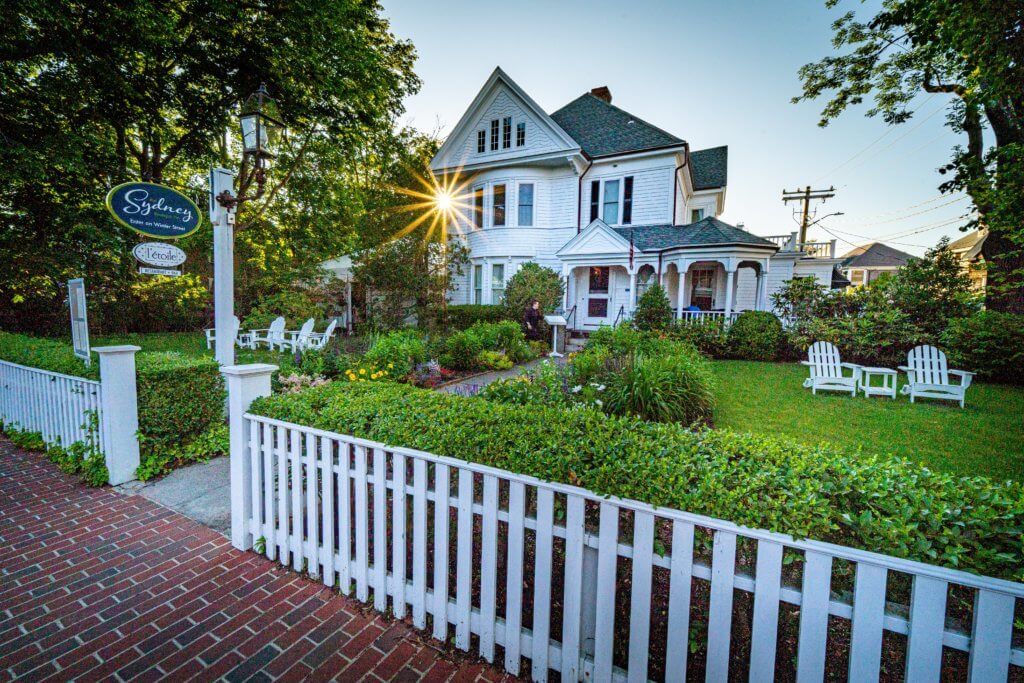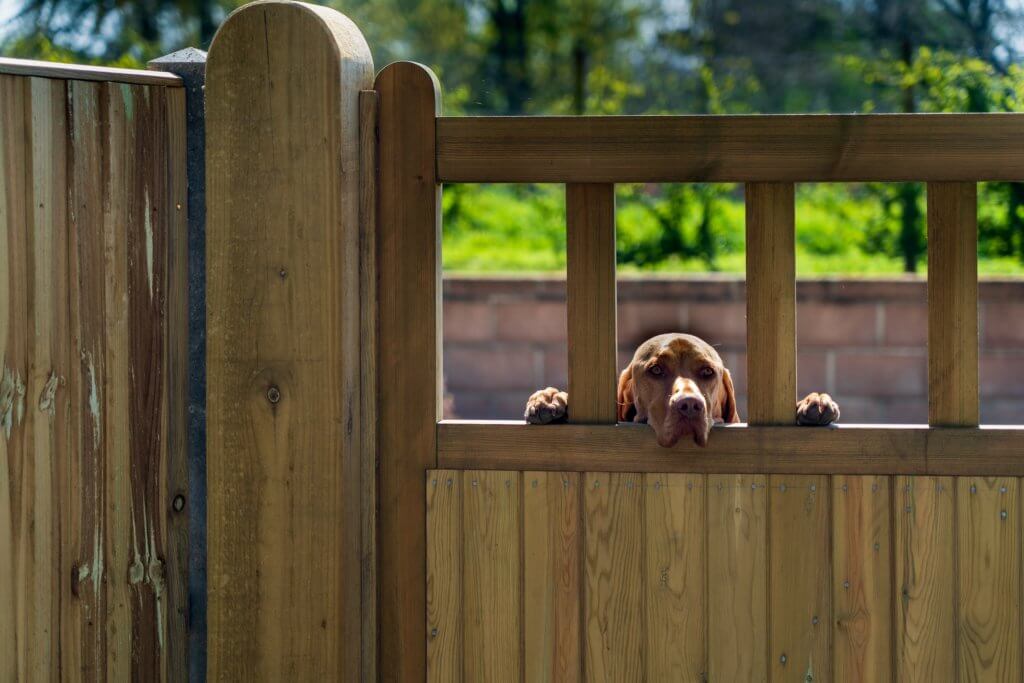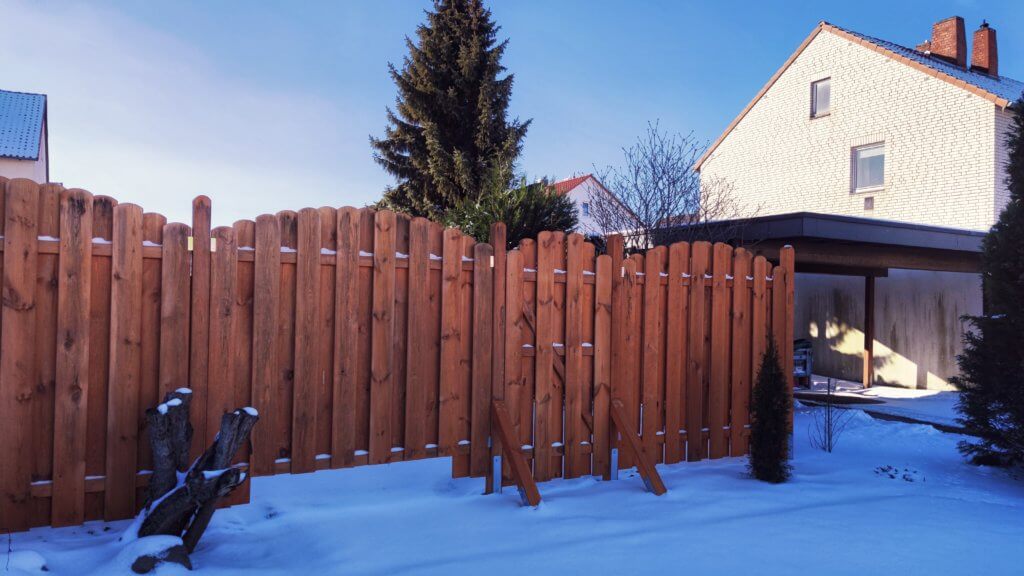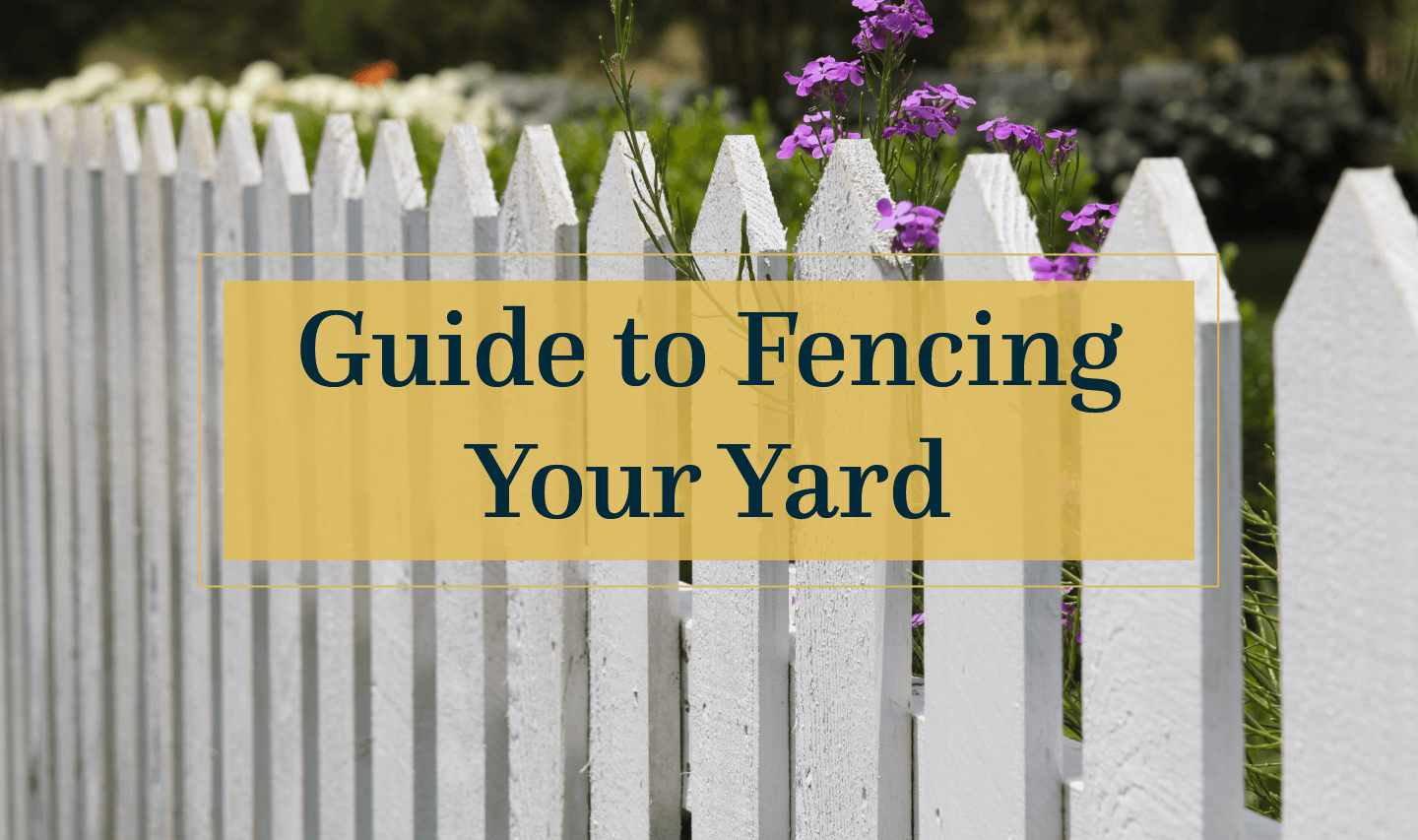Guide to Fencing Your Yard
Fencing is one way homeowners can increase the value of their outdoor space, as well as their own enjoyment outside. Fencing in a yard comes with many options, from height, material, and gating. Putting up a fence can block visibility to close-by neighbors, keep your dog safely within your yard, provide additional curb appeal, keep wildlife out of your gardens, and more! Before you start on your own fencing project, there are several things to consider.
Firstly, determine why you have decided you would like a fence. This will help you narrow down what type of fence you would like to install. Walking into your local hardware store or browsing online can bring up a seemingly infinite number of fence styles. Knowing exactly where and why you would like a fence can help you choose what style will be best for you.

Front Yard Fencing – While not as common as backyard fences, there are many reasons you may choose to install a fence in your front yard. Privacy, curb appeal, and protection for children from the road are common reasons for a front yard fence. Fencing a front yard requires special attention, as many area ordinances and HOAs can dictate the size, placement, and style of fencing visible from the road or from neighbors. Always make sure to check the local bi-laws and HOA rules to help you decide what type of fence you can put up. You may need to consider applying for a variance in order to put in a front yard fence. Make sure to speak with your local municipality to understand each step that is involved in this process.
To increase the privacy to your front yard, consider a wooden or vinyl fence. These usually offer more privacy than a chain link or metal fence. If visual appeal is what you are looking for, take a look at the many options a wrought iron fence can have.
A gate will likely be necessary if you also have a driveway. With options for automatic gates, keypads, and more, gates can be hassle-free for your front yard.

Fencing for a Dog – If you are considering putting up a fence in order to keep your pet safely within your yard, there are several issues to consider. You will want to know if your dog views obstacles as a challenge, and enjoys digging, jumping, or climbing fences to escape their backyard. If you own a large dog who may be enticed to jump the fence if they see the neighborhood cat on the other side, a six-foot fence is often recommended. For smaller dogs, a shorter fence is likely all that is necessary. It is also important to consider the spacing between the pickets of the fence you intend to purchase. Make sure your pet cannot escape between the slats when they are excited and motivated to escape!
Lastly, also check for your options to anchor the bottom of your fence in the ground. This step is particularly important if your dog will likely dig under the fence. While it may be enough to deter your dog from attempting to escape by simply installing a fence, if your dog is easily disturbed by passers-by, a more solid fence that inhibits their line of sight can also help your dog remain calm in your yard.

Privacy Fencing – There are many options available to create privacy around your yard. While wooden and vinyl fences offer simple solutions, some homeowners choose to use create a “live fence” with shrubbery around the perimeter of their yard. While shrubs do take longer to grow into a seamless fence, and require more upkeep, they are a beautiful option, depending on the setting.
For a more affordable option, a chain link fence with privacy screening can be an option as well. These fences can be bought in a variety of colors and may even blend into the background to be not as visible as other kinds of fencing.
Carefully examine the benefits of each type of fencing material for your privacy fence. Are you looking to conceal unattractive noises? Sights of the road or of neighbors? Choose a material that will create the best barrier for your needs.
Once you choose the material, size, and placement of your fence, there are still several steps to take before installing it. The first step is to have a survey conducted if your property lines are not well marked. Making sure to complete this step can help save you property disputes and issues down the road.
Next, a permit from your local municipality is often needed in order to legally install a fence. Pulling a permit will also ensure that you are following all guidelines on height and fence restrictions for your property.
If you are choosing to install your fence on your own, you will also want to place a call to 811 in order to have the underground utility lines marked on your property. Calling before you dig can save you the many headaches of nicking a utility line or pipe underground.
One last consideration to the process is to know your soil before fencing. If your soil is composed of clay, reinforced fenceposts may not be necessary. However, if you have sandy soil, concrete may need to be poured around each post. Also, if your property is new construction, you will want to ensure that the soil has settled or has been heavily compacted before installation.
Hiring a fencing company can help eliminate much of the work of installing a fence. Always make sure that they will be pulling a permit and calling 811 so that you do not have any unforeseen issues along the way.
About the Author
By: Rachel Valerio
Exclusive for JulieCoRealty.com

